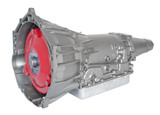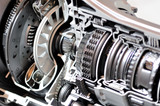Can Low Transmission Fluid Reduce Engine Power?
From getting to work to getting the kids to school to getting to your best friend’s house, you depend on your vehicle in a vast number of ways. To have a smooth run of your vehicle, all the entire architecture and engine mechanism must perform optimally. To start with, the engine – which is the heart and also a delicate part of the vehicle, must be in a healthy state all times.
How do you feel when you have your foot on the accelerator and you there is a drag in the movement of the vehicle? Frustrating. Transmission could be responsible. In days-gone-by of ancient vehicles, mere changing of the spark plugs, plug wires or even the carburetor would bring about a drastic change in the ‘drag’ movement. In modern vehicles where sensors are embedded, there are all kinds of culprits behind your car reluctance to accelerate.
You could be confused how transmission and/ transmission fluid is very important to vehicle’s engines. Here is why. But before getting to know the importance of a transmission fluid, this is what transmission means. Transmission refers to a gearbox that makes use of gear and gear trains to provide speed and torque conversions from a rotating power source, the engine, to another device – wheels.
Transmission fluid, on the other hand, is used to lubricate the components of a car’s transmission for optimum performance. If you have a faulty transmission, it will affect the smooth run of your engine which in turn makes you frustrated. In a situation where there is leakage or low transmission fluid, the engine would not provide maximum speed your vehicle.
What Is Engine Power?
To fully understand how engine works, knowing the power your engine can produce is important. Engine power is the amount of twisting force available at the crankshaft in the engine. The more torque you have, the more pulling power the engine has; hence, the force you feel when accelerating your vehicle.
The torque measurement provides an indication of how fast the engine will be able to move your vehicle’s weight. When driving and you have “engine power induced” light on, most times, it is the transmission losing its fluid. Also, the “check engine” light may pop on. Do not panic yet. Remain calm when driving your vehicle.
Ideally, when these lights come on, they mean your vehicle’s performance has been reduced to avoid damaging and wearing off the engine. And most modern cars are with series of sensors, which makes the electronic control unit to trigger the Reduced Power Mode after it has detected a system failure in the engine.
What Triggers the “Reduced Engine Power” Warning Light?
There are lots of reasons why your reduced engine light is on and you may be confused on how to make it go off. However, one of the most common causes of this problem is a fault with your electronic throttle actuator system. Modern cars utilize this in the stead of a tradition mechanical throttle body. In a throttle actuator control system, the Engine Control Unit masterminds two accelerator position sensors to determine your desire to accelerate. The device calculates the appropriate throttle response from two throttle position sensors.
Once it has the necessary information from the sensors, the Engine Control Unit uses an actuator motor to maneuver the throttle, thus controlling airflow into your vehicle’s engine. Any problem with your throttle actuator control system can easily trigger the “reduced engine power” warning light on the dashboard of your vehicle. For quick instance, the problem could be one of the vehicle’s sensors, the throttle body or even the accelerator pedal assembly.
Solutions to Reduced Engine Power Light
When you start your vehicle and you notice the Reduced Engine Power light is on, it is very much advisable not to drive. And if you are already at top speed on the highway, it is expected of you to visit a technician immediately. When you notice the light is off, the next thing is for you to scan your vehicle.
Sometimes, error codes and faults that occur are stored within the systems of your vehicle even if the scan occurs after the light goes off. In days-gone-by, older vehicles do not have computer systems which makes detecting fault more difficult. And finding these faults could be very expensive as well.
How do you fix this problem; reduced engine power light? Before driving to the mechanic or a technician, you could handle this yourself. If you drive a reduced engine power car, it could cause more problems before you get to the mechanic that will have your vehicle fixed. Here are the simple steps you can take:
1. Replace the Air Flow Sensor
There are couple of ways to detect if your vehicle’s air sensor is not working properly. When you start the engine, open the hood or bonnet. Try to locate the air flow sensor and tap severally. If the engine falters slightly, the air flow is dirty. Alternatively, stop the engine and disconnect the sensor.
Start the engine afterwards. The engine will sense the removal of the air flow sensor and will go into a back-up running mode. This is a simple fault with a pretty simple fix. Replacing the air flow sensor is the best alternate when you discover it is dirty and enjoy a return to your standard engine power!
2. Replace Air Filter
Another step in having a healthier engine is to make sure you have a clean air filter in perfect working condition. In almost all modern cars, the air filter is located in a rectangular box. It is placed to one side of the engine block just near the fender. Remove the filter itself and have a check under a light.
If no light or very little light comes through, that means the air filter is clogged and must be replaced immediately. When engine response to distorted conditions begins, transmission fluid is one of the major things to replace immediately. Hence, the reduction in engine power which would make the engine wear and tear in no time.




